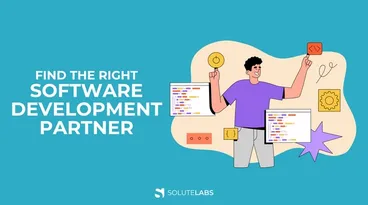In the ever-evolving world of software development, choosing the right mindset can make or break success. There are two main paths to consider: a Project Mindset or a Product Mindset. While they may seem similar, the choice can dramatically affect your bottom line and how your software evolves. Are you ready to explore which approach might work best for your Software Development efforts? Let's dive into the intriguing comparison of Project vs Product mindset. It's more than a decision—it's a strategic step that could significantly reshape your software development success.
What is a Project Mindset?
Project Mindset, is a pivotal concept in business strategy and software development, which revolves around the idea of temporary, time-bound initiatives aimed at achieving specific goals. When an organization or team operates with a project mindset, they focus on delivering individual tasks or projects, each with a definitive start and end date. This approach, frequently used in traditional project management, prioritizes strict adherence to budget, scope, and timelines.
A project mindset can be quite effective when applied correctly, particularly for businesses that work on clearly defined projects that have fixed requirements and a set timeline. However, this mindset might also foster a short-term perspective, as it often disregards the need for adaptability and continuous improvement, both essential in today's dynamic software development landscape.
What are the Drawbacks of Project Mindset?
While the project mindset has its advantages, it also comes with several drawbacks, particularly when applied in the context of software development:
1. Short-Term Focus:
A project mindset often encourages a short-term perspective, focusing on the completion of individual projects instead of the ongoing success and improvement of the product.
2. Limited Flexibility:
Projects typically have strict deadlines and budgets, leaving little room for changes or adjustments based on customer feedback or market shifts.
3. Lack of Continuous Improvement:
Once a project is completed, teams usually move on to the next task, leaving limited opportunities for refining and improving the finished product.
4. Lower Customer Engagement:
A project-based approach tends to prioritize project completion over customer satisfaction. This could result in lower customer engagement and loyalty over time.
5. Risk of Siloed Work:
Teams working on individual projects may operate in silos, leading to a lack of collaboration and communication, which can impact the overall quality and integration of the work.
6. Reduced Innovation:
With the focus on completing tasks on time and within budget, there might be less room for creativity and innovation.
Remember, the impact of these drawbacks will vary depending on your organization's specific circumstances and the nature of your projects. It's essential to understand these potential challenges to make an informed decision about the best strategic approach for your software development efforts.
What is a Product Mindset?
A Product Mindset is a distinct approach in business strategy and software development that focuses on the long-term success and continuous improvement of a product. Unlike the project mindset, which concentrates on completing specific tasks within a designated time frame, the product mindset sees a product as a continuous entity that needs regular nurturing, refinement, and adaptation.
With a product mindset, the entire team is responsible for the product's lifecycle, from its inception to its growth and evolution. This perspective encourages a deep understanding of the user's needs and a commitment to delivering value over time. The aim is to create products that are adaptable and sustainable, constantly evolving based on user feedback and market dynamics.
In the realm of software development, a product mindset emphasizes creating software that remains relevant, functional, and competitive over time. It values user satisfaction, feedback, and engagement, taking into account that the product's success heavily relies on how well it serves its users and how swiftly it can adapt to changing user needs and market conditions.
Ready to transform your business into a Product-Driven Powerhouse? SoluteLabs, a leader in Product Engineering, is your partner in creating compelling digital products. Contact Us today and let's unlock unmatched value together.
Benefits of Product-Centric Approach
Adopting a product-led approach in business and particularly in software development can offer a multitude of benefits:
1. User-Centric Focus:
This approach considers the user at the heart of product development. Here, a deep understanding of user requirements, preferences, and behaviors is integral to the design and delivery of the product. Insights derived from user research and data analysis help build a product that addresses the user’s needs and problems. This results in a higher likelihood of product adoption, user satisfaction, and successful market penetration.
2. Continuous Improvement:
By viewing the product as an ongoing project, the product-led approach fosters a culture of continuous improvement, enhancing the product based on user feedback and market changes. This results in a more dynamic and responsive product that can adapt and evolve to meet the changing needs of the users and the business landscape.
3. Long-Term Success:
With its long-term perspective, this approach aims for lasting customer engagement rather than one-off project completions. This kind of approach can lead to sustainable growth and profitability as it often results in increased user loyalty and customer lifetime value.
4. Increased Customer Loyalty:
By continually improving the product based on user needs, businesses can increase customer satisfaction. This results in improved customer retention and loyalty, as users feel heard and valued. Also, it makes the customers more likely to recommend the product to others, driving organic growth and reducing customer acquisition costs.
5. Competitive Advantage:
A product-led approach allows businesses to be agile, quickly adapting to changes in the market or user preferences. This agility and responsiveness help companies to stay competitive and innovative. By being the first to react to emerging trends or changes in user behavior, businesses can maintain a competitive edge and secure a larger market share.
6. Cross-Functional Collaboration:
The product-centric approach fosters a culture of collaboration across different teams within the organization. Breaking down silos, promotes a more holistic view of the product, with various departments such as design, development, marketing, and sales all working together towards a common goal. This enhanced collaboration can lead to better synergy in the product development process, resulting in more comprehensive and effective product solutions.
7. Maximized Value:
It emphasizes delivering value at every stage of the customer journey. From the initial contact point to post-sales support, every interaction is geared towards enhancing the user's experience with the product. This commitment to value creation makes the product consistently relevant to its users and more likely to generate a strong return on investment over time.
Also, Read: Scaling Your Product Development Process: Strategies for Managing Growth
Difference between Product Mindset and Project Mindset
Also, Read: Building Empathy in Product Discovery: Connecting with Users
From Projects to Products: Prioritizing a Mindset Shift
Transitioning from a project-based to a product-based mindset involves strategic changes across various aspects. Prioritizing a product-focused approach aligns your initiatives toward enduring success, customer contentment, and continuous enhancement. Here are some crucial steps to initiate this change in perspective:
1. Embrace a Long-term Vision:
Shift your focus from just short-term goals and project deliverables to a culture that values enduring success, sustainability, and constant growth. Prompt your teams to look beyond singular projects and conceptualize the long-term evolution of the product.
2. Customer-Centric Approach:
Place customer needs and satisfaction at the core of your product development initiatives. Gather customer feedback actively using different platforms such as surveys, user testing, and direct conversations. Use this feedback to continually modify your product roadmap to better meet customer demands.
3. Flexible Planning:
Adopt Agile Methodologies that encourage flexible planning and rapid response to changes. Embrace a cycle of continuous development and delivery, which enables frequent release of new updates and features. This method helps gather early user feedback, validate assumptions, and respond efficiently to market needs.
4. Cross-Functional Collaboration:
Encourage collaboration between different teams to ensure a holistic understanding, by eliminating organizational barriers and cultivating a collective responsibility for the product's success. This collaboration ensures a comprehensive understanding of the product, its requirements, and its market potential.
5. Outcome Measurement:
Shift your success metrics from project completion and adherence to budget and time constraints to more substantial and meaningful measures. Gauge success based on factors such as user satisfaction, customer retention, product expansion, and adaptability. Continually assess the product's effectiveness in meeting customer needs and make necessary improvements.
6. Continuous Learning and Improvement:
Create a culture of learning and continuous improvement. Encourage experimentation, calculated risk-taking, and innovation. Welcome failures as learning opportunities that provide valuable insights for informed decision-making and continuous product enhancement.
7. Resource Allocation:
Allocate resources for long-term product maintenance and enhancement. Acknowledge that a product needs continual attention even post-launch. Consider forming dedicated teams to provide continuous support, address customer concerns, and implement product improvements, ensuring its continued success.
8. Leadership Support:
Leadership plays a critical role in this transition. They should endorse and model the product-centric approach. They should communicate its significance, and provide necessary resources and infrastructure to facilitate a successful transition.
Adhering to these steps and prioritizing a product mindset can help your organization transition its focus from individual projects to building successful, enduring products. This shift fosters a culture of customer-focused, adaptable, and continuous improvement, paving the way for long-term success and growth in the dynamic software development industry.
Remember, the shift from a project to a product mindset isn't a quick fix—it's a strategic transformation that requires time, resources, and commitment from all levels of the organization.
Also, Read: Unlock the Full Potential of Your Product with Expert Product Management Services
Bottom Line
Choosing between a project vs product mindset is a crucial strategic decision for any business, particularly in software development. The project mindset focuses on completing tasks, while the product mindset prioritizes long-term success and ongoing improvement. It's not about one being universally better than the other, but about selecting the approach that aligns best with your business goals, work nature, and future vision. Transitioning to a product mindset, while promising significant benefits, requires a commitment to customer focus, adaptability, and continuous learning. In essence, the right mindset can be a game-changer in your journey toward lasting success.
Frequently Asked Questions
Have a product idea?
Talk to our experts to see how you can turn it
into an engaging, sustainable digital product.





